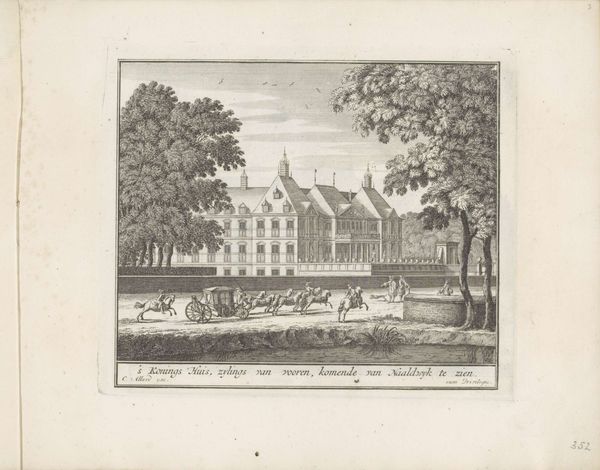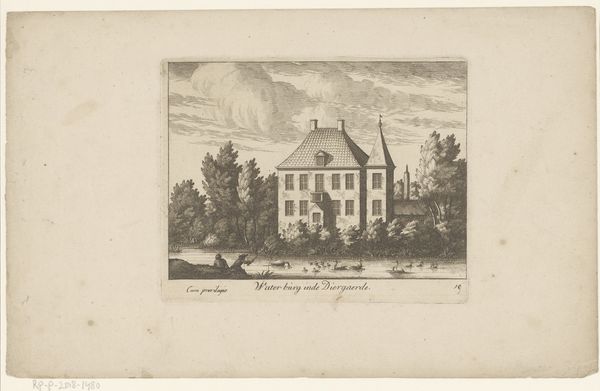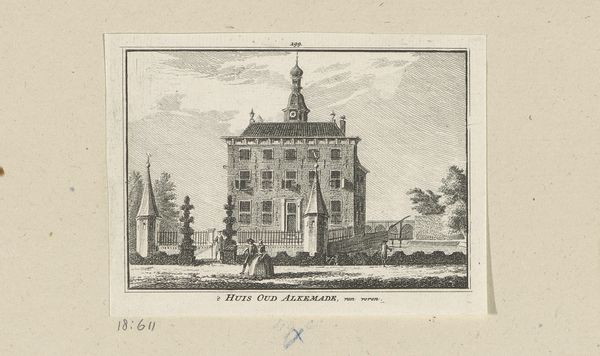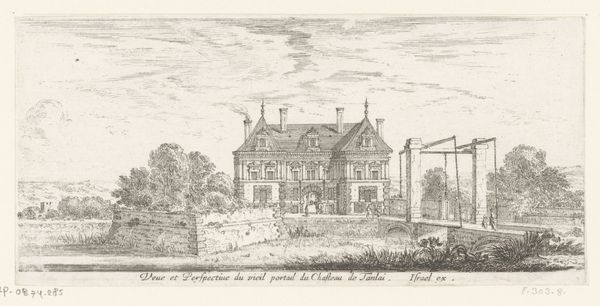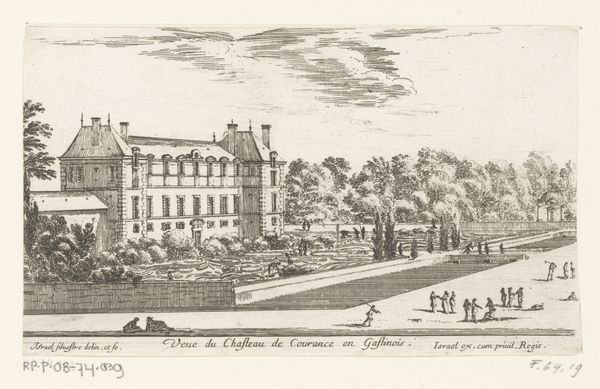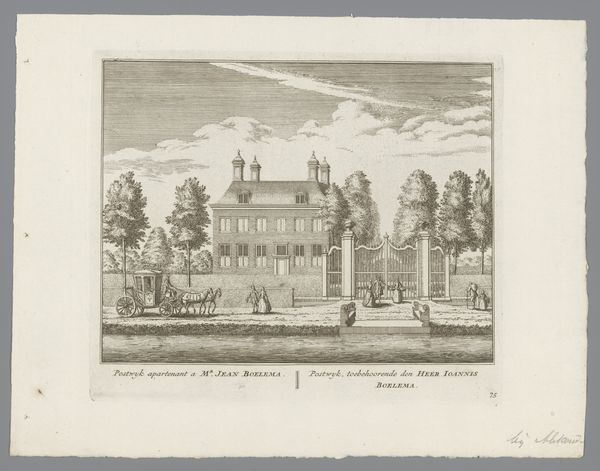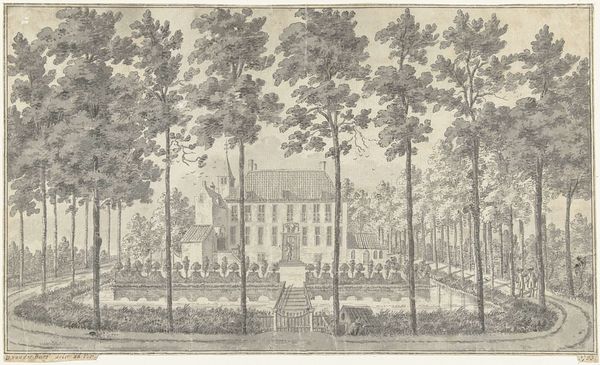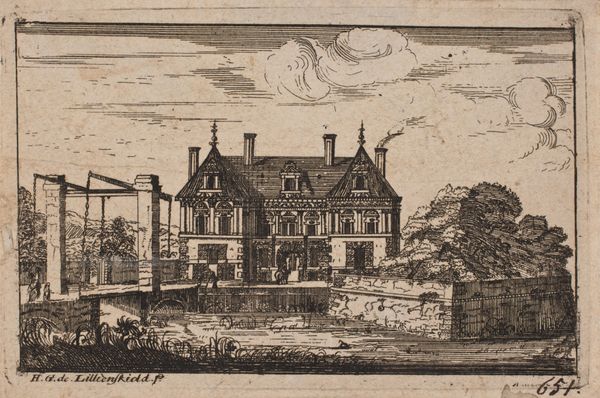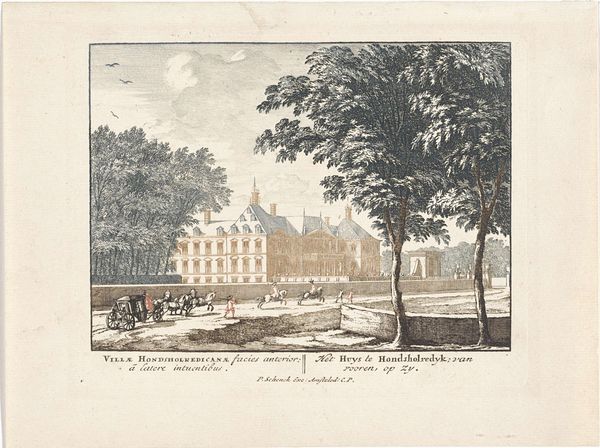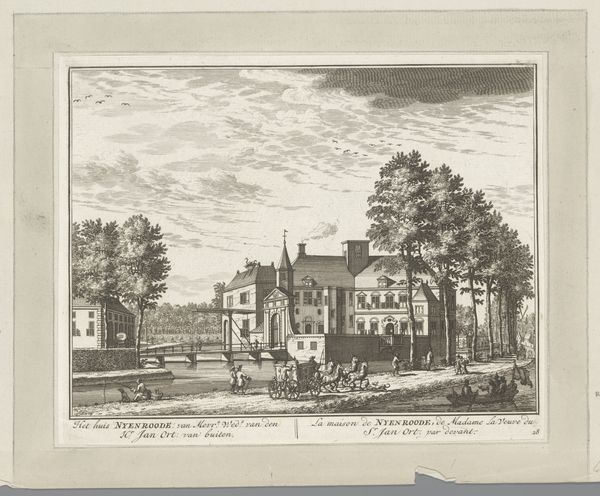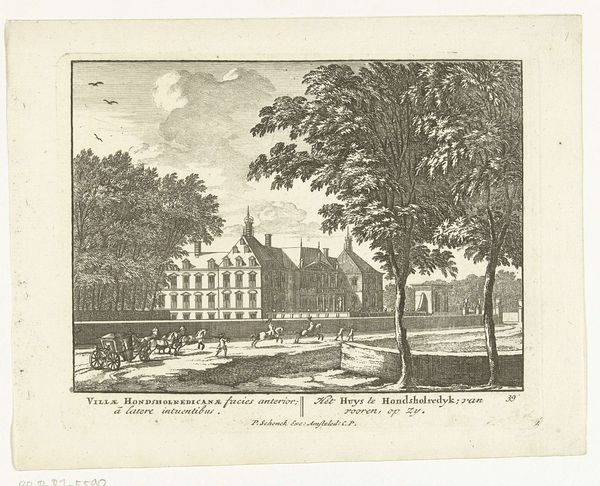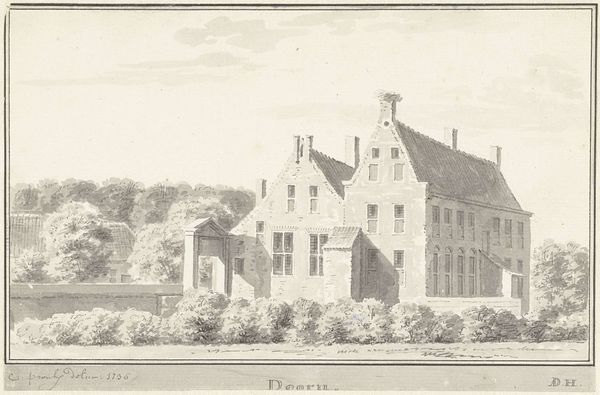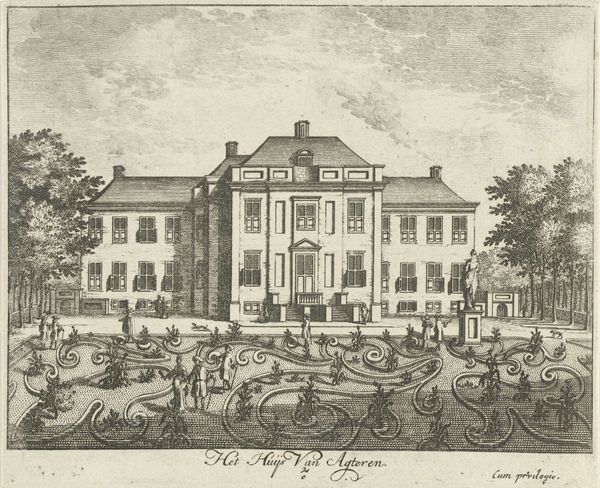
print, engraving
#
dutch-golden-age
#
ink paper printed
# print
#
landscape
#
cityscape
#
engraving
#
realism
Dimensions: height 84 mm, width 108 mm
Copyright: Rijks Museum: Open Domain
Editor: Here we have Hendrik Spilman's "Gezicht op Kasteel Oud-Poelgeest, 1738," created sometime between 1750 and 1792. It’s a print made using ink on paper. The fine lines give the piece a really delicate feel. How do you read this engraving from a formal perspective? Curator: Focusing on the formal qualities, observe the strategic employment of line, particularly evident in the parallel hatching which defines the tonal range. The geometric rigour of the building's facade stands in calculated contrast to the more organic, freely rendered trees. Do you note the rhythmic repetition of the windows and the calculated recession into depth achieved through variations in line weight and density? Editor: I do, and I see how that contrasts with the almost haphazard scattering of lines in the sky, giving it a strange sense of depth... But how do these purely visual elements speak to the work as a whole? Curator: The opposition between the architectural and the natural constructs a dialogue on order versus chaos. Spilman invites us to dissect the very fabric of representation. Where does structure begin and end? How do the formal structures and geometries serve or belie any deeper, more representational value? Editor: So, it's less about *what* is depicted and more about *how* it's depicted, the arrangement and execution... I guess I typically focus more on subject matter. Curator: Precisely. By directing our gaze to the intrinsic qualities of line, tone, and composition, we move beyond superficial readings toward a richer appreciation of the work’s underlying structure. What have you gathered through looking? Editor: Thinking about it formally makes me consider how the medium and its limitations directly affect the final product. You notice the choices in a totally different way.
Comments
No comments
Be the first to comment and join the conversation on the ultimate creative platform.
